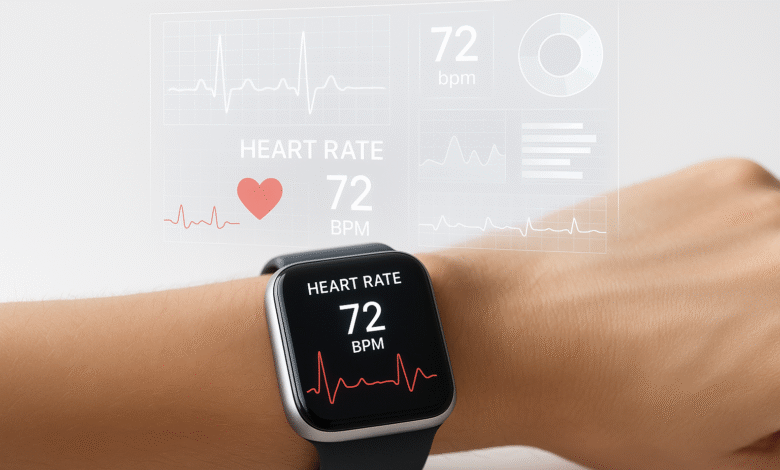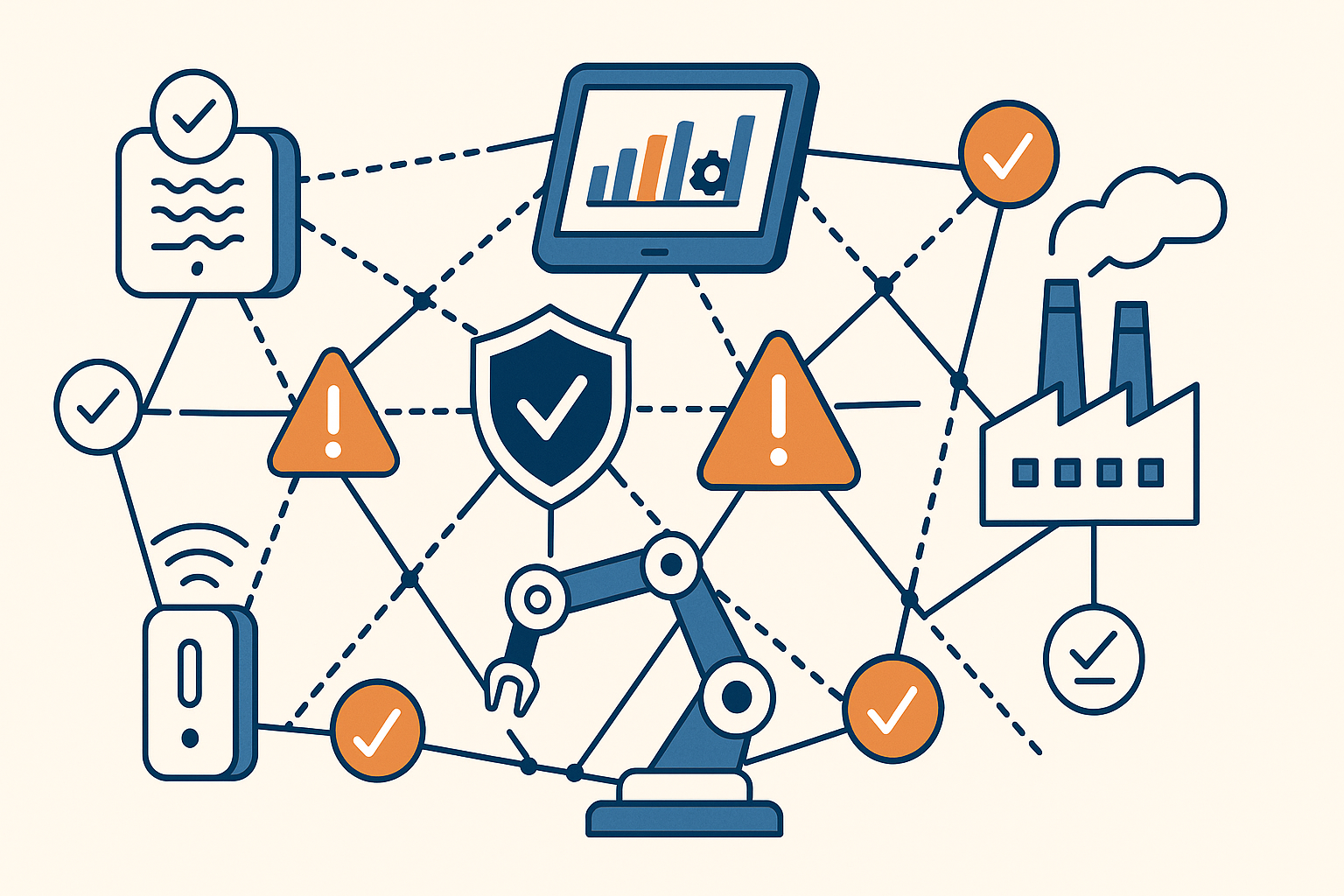Wearable Health Devices: Clinical-Grade Continuous Monitoring
Healthcare is going through a major change, thanks to advanced wearable health devices. These smart tools can monitor your health continuously—with accuracy close to what you'd get in a clinic.

Healthcare is going through a major change, thanks to advanced wearable health devices. These smart tools can monitor your health continuously—with accuracy close to what you’d get in a clinic.
Wearables are helping connect the dots between regular doctor visits and daily personal health. They give people and healthcare providers real-time insights into how the body works, uncovering patterns in wellness that were hard to track before. This shift is making healthcare more personal, proactive, and connected than ever before.
The Evolution of Wearable Health Technology
Wearable health devices have evolved far beyond simple step counters and basic fitness trackers. Today’s advanced medical wearables incorporate sophisticated sensors, artificial intelligence algorithms, and cloud-based analytics to provide comprehensive health monitoring solutions. This evolution represents a paradigm shift in how we approach preventive healthcare and chronic disease management.
The journey from basic activity monitors to clinical-grade wearable technology has been marked by significant technological breakthroughs. Early fitness trackers focused primarily on physical activity metrics, while modern health monitoring devices can track vital signs, detect arrhythmias, monitor blood glucose levels, and even predict potential health episodes before they occur.
Historical Development and Market Growth
The wearable health technology market has experienced exponential growth, with global revenues projected to reach unprecedented levels in the coming years. This growth is driven by increasing consumer awareness of preventive healthcare, aging populations worldwide, and the growing prevalence of chronic diseases that require continuous monitoring.
Healthcare professionals increasingly recognize the value of continuous health monitoring through wearable devices, as these tools provide real-time data that can inform treatment decisions and improve patient outcomes. The integration of wearable technology into clinical practice has demonstrated significant benefits in managing conditions such as diabetes, hypertension, and cardiovascular disease.
Clinical-Grade Monitoring: Setting New Standards
Clinical-grade wearable health devices distinguish themselves through their ability to provide medical-quality data that healthcare providers can trust for diagnostic and treatment purposes. These devices undergo rigorous testing and validation processes to ensure accuracy, reliability, and compliance with medical device regulations.
Precision and Accuracy in Health Metrics
The accuracy of wearable health devices has improved dramatically through advances in sensor technology and signal processing algorithms. Modern devices can measure heart rate variability with precision comparable to clinical electrocardiograms, track blood oxygen saturation levels with medical-grade accuracy, and monitor sleep patterns with unprecedented detail.
Clinical validation studies have demonstrated that many consumer-grade wearable devices can provide data quality sufficient for medical applications. However, clinical-grade devices typically offer enhanced accuracy, longer battery life, and more robust data security features that meet healthcare industry standards.
Regulatory Compliance and Medical Certification
The distinction between consumer fitness trackers and clinical-grade wearable health devices often lies in their regulatory approval status. Medical wearables must comply with stringent regulatory requirements from agencies such as the FDA, CE marking in Europe, and other international health authorities.
These regulatory frameworks ensure that clinical-grade devices meet specific performance standards, maintain data integrity, and provide consistent results across different user populations. The certification process involves extensive clinical trials, validation studies, and ongoing quality assurance measures.
Key Technologies Behind Continuous Monitoring
Advanced Sensor Integration
Modern wearable health devices incorporate multiple sensor types to provide comprehensive health monitoring capabilities. Photoplethysmography (PPG) sensors measure heart rate and blood oxygen levels, while accelerometers and gyroscopes track movement patterns and detect falls. Some devices integrate electrocardiogram (ECG) capabilities for cardiac rhythm analysis.
The miniaturization of sensors has enabled the development of increasingly sophisticated wearable devices that can monitor multiple physiological parameters simultaneously. These multi-sensor platforms provide a holistic view of user health status while maintaining comfort and usability.
Artificial Intelligence and Machine Learning
AI-powered algorithms play a crucial role in transforming raw sensor data into actionable health insights. Machine learning models can identify patterns in physiological data that may indicate developing health issues, predict potential medical events, and provide personalized health recommendations.
The integration of artificial intelligence in wearable health technology enables predictive analytics that can alert users and healthcare providers to potential health risks before symptoms become apparent. This proactive approach to health monitoring represents a significant advancement in preventive medicine.
Cloud Computing and Data Analytics
Cloud-based platforms enable wearable health devices to leverage powerful computing resources for complex data analysis and storage. These platforms facilitate the integration of wearable data with electronic health records, enabling healthcare providers to access comprehensive patient information for informed decision-making.
The scalability of cloud infrastructure allows wearable health technology to handle massive amounts of data from millions of users while maintaining performance and security standards. Advanced analytics capabilities enable population health insights and contribute to medical research initiatives.
Read More: IoT-Powered Wearables: The Future of Patient Monitoring in Germany
Applications in Healthcare and Wellness
Chronic Disease Management
Wearable health devices have demonstrated significant value in managing chronic conditions such as diabetes, hypertension, and heart disease. Continuous glucose monitors provide real-time blood sugar readings, while blood pressure monitors offer 24-hour monitoring capabilities that can detect patterns invisible to traditional clinical measurements.
The ability to track medication adherence, monitor symptom patterns, and assess treatment effectiveness through wearable technology has revolutionized chronic disease management. Patients can actively participate in their care while healthcare providers gain valuable insights into disease progression and treatment response.
Preventive Healthcare and Wellness
Beyond disease management, wearable health technology plays an increasingly important role in preventive healthcare and wellness promotion. These devices can identify risk factors for developing chronic conditions, encourage healthy behaviors, and provide early warning signs of potential health issues.
The gamification of health monitoring through wearable devices has proven effective in motivating users to maintain healthy lifestyles. Features such as activity challenges, goal setting, and social sharing create engaging experiences that promote long-term behavior change.
Remote Patient Monitoring
The COVID-19 pandemic accelerated the adoption of remote patient monitoring solutions, highlighting the value of wearable health devices in maintaining continuity of care while minimizing exposure risks. These devices enable healthcare providers to monitor patients remotely, reducing the need for in-person visits while maintaining quality care.
Remote monitoring capabilities have proven particularly valuable for managing post-operative recovery, monitoring high-risk patients, and providing care to patients in remote or underserved areas. The ability to track vital signs continuously and alert healthcare providers to concerning changes has improved patient outcomes and reduced healthcare costs.
Data Security and Privacy Considerations
Healthcare Data Protection
The sensitive nature of health data collected by wearable health devices requires robust security measures to protect patient privacy and comply with healthcare regulations such as HIPAA in the United States and GDPR in Europe. Encryption, secure data transmission, and access controls are essential components of comprehensive data protection strategies.
Healthcare organizations must implement comprehensive data governance frameworks that address the unique challenges of wearable health data, including data ownership, consent management, and third-party data sharing. The integration of wearable data with existing healthcare systems requires careful consideration of security implications and compliance requirements.
User Privacy and Consent
Transparency in data collection and usage practices is essential for maintaining user trust in wearable health technology. Users must understand what data is collected, how it is used, and who has access to their information. Clear consent mechanisms and user control over data sharing are fundamental requirements for ethical wearable health implementations.
The balance between personalized health insights and privacy protection requires careful consideration of data minimization principles, purpose limitation, and user empowerment. Wearable health device manufacturers must implement privacy-by-design principles to ensure user rights are protected throughout the data lifecycle.
Future Trends and Innovations
Emerging Technologies
The future of wearable health devices will be shaped by emerging technologies such as flexible electronics, biocompatible materials, and advanced energy harvesting systems. These innovations will enable the development of more comfortable, longer-lasting, and more capable wearable devices.
Nanotechnology and bioengineering advances are paving the way for implantable and injectable monitoring devices that can provide continuous health monitoring without the need for external wearables. These next-generation devices will offer unprecedented insights into human physiology and disease mechanisms.
Integration with Healthcare Systems
The future of wearable health technology lies in seamless integration with existing healthcare systems and workflows. Interoperability standards and APIs will enable wearable data to flow seamlessly between devices, electronic health records, and clinical decision support systems.
The development of standardized data formats and communication protocols will facilitate the integration of wearable health data into clinical practice, enabling healthcare providers to make more informed decisions based on comprehensive patient information.
Personalized Medicine and Precision Health
Wearable health devices will play an increasingly important role in personalized medicine approaches that tailor treatments to individual patient characteristics and needs. The continuous monitoring capabilities of these devices will enable healthcare providers to optimize treatments based on real-time patient responses and outcomes.
The integration of genomic data, environmental factors, and continuous monitoring data will enable precision health approaches that consider the full spectrum of factors affecting individual health outcomes. This holistic approach to health management represents the future of personalized healthcare.
Challenges and Limitations
Technical Challenges
Despite significant advances in wearable health technology, several technical challenges remain. Battery life limitations, sensor accuracy across diverse populations, and the need for regular calibration continue to impact device performance and user experience.
The development of more accurate sensors that can function reliably across different skin types, ages, and health conditions remains an ongoing challenge. Environmental factors such as temperature, humidity, and motion artifacts can affect sensor performance and data quality.
Adoption Barriers
The adoption of wearable health devices faces several barriers, including cost considerations, user education, and healthcare provider integration challenges. Many insurance plans do not cover wearable health devices, limiting access for some patient populations.
Healthcare provider adoption requires training, workflow integration, and evidence of clinical value. The overwhelming amount of data generated by wearable devices can create information overload for healthcare providers without proper analytical tools and decision support systems.
Regulatory and Standardization Issues
The rapidly evolving nature of wearable health technology creates challenges for regulatory agencies in developing appropriate oversight frameworks. Balancing innovation with safety and efficacy requirements requires ongoing collaboration between industry, regulators, and healthcare stakeholders.
The lack of standardized data formats and interoperability protocols can limit the integration of wearable health data across different platforms and healthcare systems. Industry-wide standards development efforts are ongoing to address these challenges.
Economic Impact and Market Dynamics
Market Growth and Investment
The wearable health technology market has attracted significant investment from venture capital firms, technology companies, and healthcare organizations. This investment has fueled rapid innovation and market expansion, with new devices and applications continuously entering the market.
The economic impact of wearable health devices extends beyond device sales to include reduced healthcare costs through early disease detection, improved treatment outcomes, and enhanced patient engagement. Studies have demonstrated cost savings through reduced hospital readmissions and improved chronic disease management.
Healthcare Cost Reduction
The potential for wearable health technology to reduce healthcare costs has generated significant interest from payers, providers, and policymakers. By enabling early intervention and preventing complications, these devices can reduce the need for expensive emergency interventions and hospitalizations.
The shift toward value-based care models has created economic incentives for healthcare providers to adopt wearable health technology as a means of improving patient outcomes while controlling costs. The ability to monitor patients remotely and intervene early can prevent costly complications and improve overall care quality.
Conclusion
Wearable health devices are changing the face of modern healthcare. With clinical-grade monitoring, these advanced tools are opening new doors in preventing disease, managing chronic conditions, and delivering personalized care—things that once seemed out of reach.
What started as basic fitness trackers has now evolved into powerful medical devices. Thanks to breakthroughs in sensors, artificial intelligence, and cloud technology, wearables are becoming a natural part of how healthcare is delivered and practiced.
Looking ahead, the potential of wearable health tech is huge. It can improve patient outcomes, lower healthcare costs, and help people take control of their own health. But to make this a reality, we must tackle key challenges like data privacy, regulatory approval, and how these tools fit into existing healthcare systems.
As healthcare goes digital, wearable devices will be at the center of the shift toward more personalized, preventive, and precise care. This merging of technology and medicine marks a major step forward in how we manage health and wellness.
Ultimately, the success of wearable health devices will depend on how well they deliver value—to patients, doctors, and the entire healthcare system. If they’re easy to use, clinically effective, and work smoothly with current workflows, these tools have the power to truly transform healthcare around the world.










